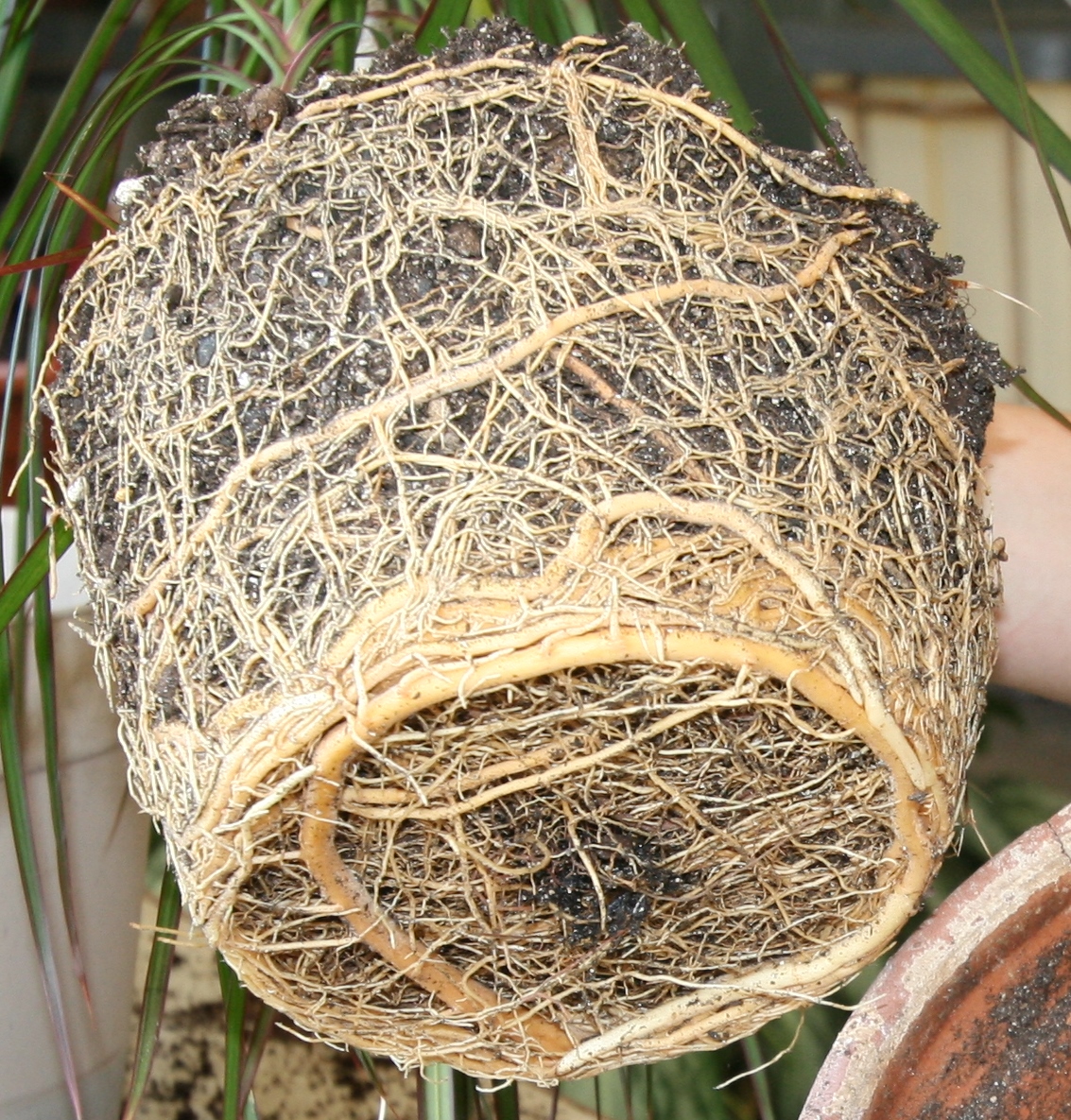Girdling Roots: The Silent Tree Killer
Submitted by Jon Curtis on October 04, 2023
What are girdling roots?
Imagine wearing a belt around your waist and it starts to feel tighter and tighter. This is what happens when tree roots start to circle, or girdle, the base of a tree. Girdling roots are circular or spiral roots that appear at or just below the soil surface at the base of the main trunk of a tree. These roots can encircle the trunk, effectively strangling the tree by restricting the flow of water and nutrients from the roots up to the leaves. Trees that experience girdling often decline in health before eventually dying. While some tree species such as pines, oaks and maples are more prone to girdling roots, all species are susceptible to girdling roots. The good news is that proper technique will ensure the long-term health of any species!

A mature tree with exposed, circular roots wrapped around main trunk (© 2012 Maggie McCain / CC BY-SA 2.0)
Signs and symptoms of girdling roots
The first symptoms of a tree with girdling roots appear in the upper portion of the crown (the branches and leaves of the tree). In the spring, smaller than average leaves may emerge earlier than normal and, in the fall, leaves may change colour or drop earlier than normal. In addition, the overall canopy may start to thin or show discoloured leaves throughout the growing season.
Signs of developmental issues can appear in the root flare (where the main roots attach to the trunk) or the base of the trunk. Girdling roots may cause one side of the trunk to become flat with no natural root flare. The culprit roots may also present themselves above the soil line – watch out!

Trees may show signs of a decline in health because of girdling roots. Note the lichen! When lichen is present on the trunk of a tree, it is typically a sign that the tree is lacking in vigour. (© 2014 Scot Nelson)
What causes girdling roots?
Trees in urban environments are exposed to many external factors that they don't typically have to contend with in the wild, which can hinder the natural growth of their roots. Some of the factors that can cause girdling roots include:
- Restricted root space: Trees grown in containers for too long may form a dense mass of roots. If these roots are not loosened before planting, they will continue to encircle the tree. Similarly, a tree that is planted in an area with insufficient soil volume may also lead to restricted root growth, and in turn, circling roots.
- Poor transplant techniques: A hole dug to the incorrect depth or width for the size of the tree’s root ball (roots and soil found inside the pot) may force the tree into a smaller space, resulting in abnormally growing roots.
- Excessive soil or mulch: Soil added above ground level (once the tree is planted) or excessive mulch added around the base of the tree has the potential to restrict root growth. We recommend adding two to four inches of mulch, spread in a doughnut shape around the trunk.
- Compacted soil: Trees improperly planted in compacted (low pore space) or poor-quality soils can restrict roots from growing outward from the tree.
- Objects in the soil: Underground objects in the soil near a tree, such as pipes, rocks, curbs, or hard surfaces, can divert roots to grow in abnormal directions.

An example of girdling roots on a plant when left to grow in a pot too long. (© 2008 Gardening Solutions)
Prevention & treatment
Girdling roots are rarely seen on trees growing in the wild; however, urban trees are much more susceptible, which is why it’s important to take preventative steps to properly plant and care for your trees. When considering planting a tree, we suggest ensuring you plant the right species in the right place – make sure the species you choose will thrive in the space, soil and light conditions in your yard. Loosen up the roots at the time of planting and be sure to provide your tree with proper, ongoing care. If you choose to plant a tree through our Full Service Backyard Tree Planting Program, our team of experts can take care of the planting for you to ensure proper root growth.

A paper birch planted by LEAF staff! (© 2021 Adriana Rezai-Stevens / LEAF)
For trees that have already developed girdling roots, we suggest seeking the advice of an ISA (International Society of Arboriculture) certified arborist, especially if you are dealing with structural or health issues in your tree(s). Younger trees with smaller girdling roots can have the problem roots carefully removed by a professional during the dormant months (fall/winter) and trees that have been severely damaged, weakened or killed because of girdling roots should be removed entirely.
Jon is the Residential Planting Programs Field Coordinator at LEAF
LEAF offers a subsidized Backyard Tree Planting Program for private property. The program is supported by the City of Toronto, the Regional Municipality of York, the City of Markham, the Town of Newmarket, the Regional Municipality of Durham, the Town of Ajax, the Township of Brock, the Municipality of Clarington, the City of Oshawa, the City of Pickering, the Township of Scugog, the Town of Whitby and Ontario Power Generation.

0 Comments
Recommended Comments
There are no comments to display.
Create an account or sign in to comment
You need to be a member in order to leave a comment
Create an account
Sign up for a new account in our community. It's easy!
Register a new accountSign in
Already have an account? Sign in here.
Sign In Now